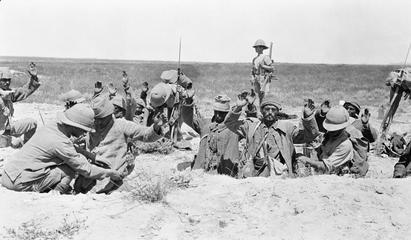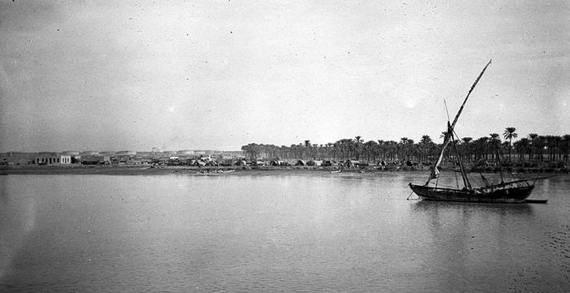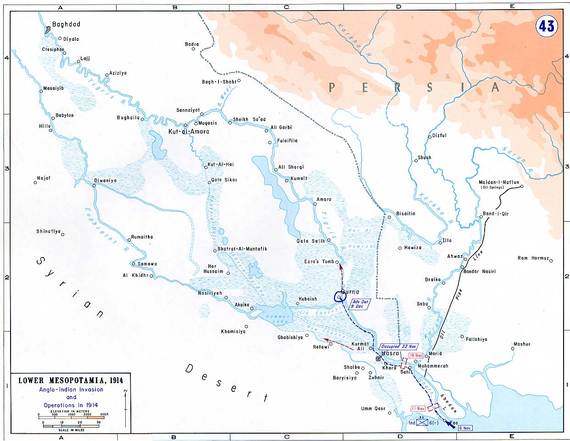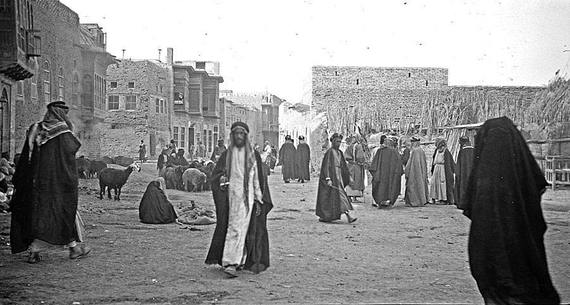The War in Mesopotamia November-December 1914
Mesopotamia, an ancient land between the Tigris and Euphrates rivers, had been part of the Ottoman Empire for centuries, although it had never been completely under its control. The region held important reserves of oil around Basra in the south and around Mosul in the north. It adjoined Persian oil fields that were the Royal Navy's primary supply of fuel oil.
The Anglo Persian Oil Refinery at Abadan, Persia
Not surprisingly, early in the war Britain decided to occupy the oilfields and pipeline near Basra, and to seize control of the Shatt al Arab in order to protect its access to Persian oil. Protecting the new oil refinery in Abadan. Now considered critical for the supply of fuel oil to the Royal Navy, was also an important strategic objective.
The Mesopotamian Theater 1914
The operational area of the campaign in Mesopotamia stretched from the Shatt al Arab to Mosul and was flanked on either side by the two rivers. The swamps and deserts that dominated this area, the poorly developed port facilities, and the general lack on any transportation infrastructure, made the movement of troops and supplies particularly challenging.
The Mesopotamian campaign involved mainly Indian and Australian troops. The Indian troops, designated Indian Expeditionary Force D (IEF D), were composed of the 6th Poona Division with additional reinforcements. Ottoman forces were organized into the Ottoman 4th Army. It was composed of two corps, the XII Corps with the 35th and 36th Divisions at Mosul and XIII Corps, with the 37th and 38th Divisions at Baghdad.
The British offensive began on November 6, 1914 with the bombardment of the Al-Faw fort at the mouth of the Shatt al Arab. The IEF D numbered approximately 20,000 men. They were opposed by a force of 350 Ottoman troops with four cannons. By November 22, the British force had occupied the City of Basra and the surrounding oil fields.
At the subsequent Battle of Qurna, December 3 to 9, 1914 at the junction of the Tigris and Euphrates Rivers, a force of approximately 2,100 British and Indian troops met an Ottoman force of approximately 1,000 men under the command of Colonel Subhi Bey, the Wali, or governor, of Basra. The battle, more of a skirmish really, resulted in a British victory and provided a secure front line in southern Mesopotamia. The main Turkish force, under the overall command of Khali Pasha remained 275 miles north in Baghdad.
Little more would happen in the Mesopotamian Theater until the following spring when Turkish forces finally attempted to oust British forces in Basra. The Turkish attack would trigger a British counter offensive that would result in one of the most humiliating defeats ever suffered by the British Army. Ultimately, however, it would lead to the conquest of Mesopotamia and the seizure of Mosul and it would result in a transformation of the Middle East whose effects are still being felt today.




